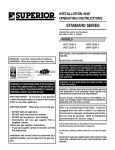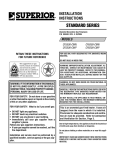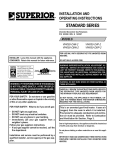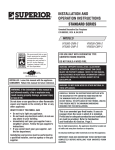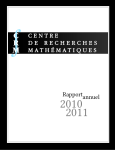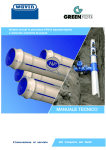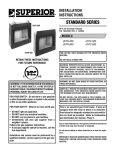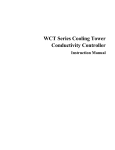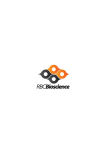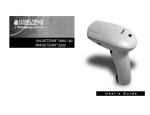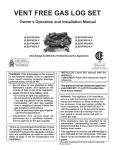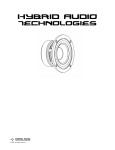Download Superior CFPF-CMN User's Manual
Transcript
INSTALLATION INSTRUCTIONS STANDARD SERIES Unvented Decorative Gas Fireplaces P/N 903589 REV. E 02/2004 MODELS CFST-CMN CFST-CMP RETAIN THESE INSTRUCTIONS FOR FUTURE REFERENCE CFPF-CMN CFPF-CMP FOR USE ONLY WITH DECORATIVE TYPE UNVENTED ROOM HEATERS. DO NOT BUILD A WOOD FIRE. WARNING: IMPROPER INSTALLATION, ADJUSTMENT, ALTERATION, SERVICE OR MAINTENANCE CAN CAUSE INJURY OR PROPERTY DAMAGE. REFER TO THIS MANUAL. FOR ASSISTANCE OR ADDITIONAL INFORMATION CONSULT A QUALIFIED INSTALLER, SERVICE AGENCY OR THE GAS SUPPLIER. WARNING: IF THE INFORMATION IN THIS MANUAL IS NOT FOLLOWED EXACTLY, A FIRE OR EXPLOSION MAY RESULT CAUSING PROPERTY DAMAGE, PERSONAL INJURY OR LOSS OF LIFE. FOR YOUR SAFETY: Do not store or use gasoline or other flammable vapors or liquids in the vicinity of this or any other appliance. FOR YOUR SAFETY: What to do if you smell gas: • • • • DO NOT light any appliance. DO NOT touch any electrical switches. DO NOT use any phone in your building. Immediately call your gas supplier from a neighbor’s phone. Follow your gas suppliers instructions. • If your gas supplier cannot be reached, call the fire department. WARNING: DO NOT BURN WOOD OR OTHER MATERIAL IN THESE APPLIANCES. CAREFULLY REVIEW THE INSTRUCTIONS SUPPLIED WITH THE DECORATIVE TYPE UNVENTED ROOM HEATER FOR THE MINIMUM FIREPLACE SIZE REQUIREMENT. DO NOT INSTALL THE APPLIANCE IN THIS FIREBOX, UNLESS THIS FIREBOX MEETS THE MINIMUM DIMENSIONS REQUIRED FOR THE INSTALLATIONS. This is an unvented gas-fired heater. It uses air (oxygen) from the room in which it is installed. Provisions for adequate combustion and ventilation air must be provided. Refer to Combustion and Ventilation Air Section, Page 3. Due to high temperatures, the appliance should be located out of traffic and away from furniture or draperies. Do not place clothing or other materials on or near this appliance. Installation and service must be performed by a qualified installer, service agency or the gas supplier. IMPORTANT: READ AND UNDERSTAND THESE INSTRUCTIONS COMPLETELY BEFORE INSTALLING YOUR UNVENTED ROOM HEATERS. NOTE: DIAGRAMS & ILLUSTRATION NOT TO SCALE. 1 TABLE OF CONTENTS GENERAL INFORMATION General Information ......................... page 2 The CFST and CFPF Series Unvented Room Heaters covered in this manual feature ceramic fiber split logs which glow realistically when the heater is operating. Inventory ......................................... page 2 Tools and Building Supplies ............ page 2 Installation Applications .................. page 2 Important Safety Information .......... page 2 Codes .............................................. page 3 Combustion and Ventilation Air ....... page 3 Location of Fireplace ....................... page 4 Clearances ....................................... page 4 Preinstallation .................................. page 5 Installation – Built-In ....................... page 5 CFST Appliance Specifications ......... page 6 CFPF Appliance Specifications ......... page 7 Connecting Gas Line ........................ page 8 Inventory These heaters have a standing pilot and are manually controlled through the use of a millivolt gas valve. A spark ignition system (piezo) allows the heater pilot gas to be lit without the use of matches or batteries and permits operation of the heater during a power outage. These heaters are fitted with a specially designed pilot (ODS) which responds to the amount of oxygen available in the room and shuts the heater off before the oxygen level drops below 18%. The pilot can be relit only when fresh air is available. Refer to the Combustion and Ventilation Air section. Electrical Wiring – Optional Blower . page 10 Log Assembly .................................. page 10 Flame Appearance ........................... page 11 Optional Equipment ......................... page 12 Blower Kit ........................................ page 12 Cleaning and Servicing .................... page 13 Accessories/Components ................ page 14 Operating Instructions ..................... page 15 CFST Replacement Parts List .......... page 17 These heaters may also equipped with an optional battery powered electronic Carbon Monoxide Safety Shut-Off (COSS) specially designed to respond to the amount of carbon monoxide present in the room air. The carbon monoxide detector will sound an alarm and shut the appliances off within 30 minutes when the amount of carbon monoxide present in the air entering the unit rises above 100 ppm. Time to respond reduces to 15 minutes maximum when carbon monoxide levels exceed 400 ppm. Unvented Gas Fireplace Gas connection fittings Installation and Operating Instructions Tools and Building Supplies Normally Required Tools Should Include: Phillips screwdriver Hammer Saw and/or Sabersaw Measuring tape Electric drill and bits Pliers Square Piping complying with local codes Pipe wrench Tee joint Pipe compound Building Supplies Should Include: Framing materials Wall finishing materials Caulking materials (noncombustible) Fireplace surround materials Check the inventory list to be sure that you have all the necessary parts in usable condition. Also check for concealed damage. IMPORTANT SAFETY INFORMATION INSTALLER: PLEASE LEAVE THESE INSTRUCTIONS WITH THE OWNER. CFST Replcement Parts ................... page 18 CFPF Replacement Parts List ........... page 19 CFPF Replacement Parts ................. page 20 Troubleshooting Guide .................... page 21 Warranty .......................................... page 24 The CFST and CFPF Series Unvented Room Heaters are designed to be built into a framed wall. This heater has been tested to the standards of ANSI Z21.11.2 unvented heaters. Do not install these unvented room heaters in a bedroom or bathroom as all units exceed maximum allowable BTU/Hr input of 10,000. OWNER: PLEASE RETAIN THESE INSTRUCTION FOR FUTURE REFERENCE. IMPORTANT: BEFORE STARTING YOUR HEATER INSTALLATION, READ THESE INSTALLATION INSTRUCTIONS CAREFULLY TO BE SURE YOU UNDERSTAND THEM COMPLETELY AND IN ENTIRETY. FAILURE TO FOLLOW THESE INSTRUCTIONS COULD CAUSE A HEATER MALFUNCTION RESULTING IN SERIOUS INJURY AND/OR PROPERTY DAMAGE. UNVENTED GAS ROOM HEATER SPECIFICATIONS AND TECHNICAL DETAILS Model No. Gas Type Maximum BTU/HR Valve Operation Ignition Manifold Pressure Gas Inlet Pressure CFST-CMN CFPF-CMN Natural 32,000 Hi/Lo Piezo 3.5" w.c. Max 7" w.c. Min. 4.5" w.c. CFST-CMP CFPF-CMP Propane/ LPG 29,000 Hi/Lo Piezo 10" w.c. Max 13" w.c. Min. 11" w.c. Note: Test gage connections are provided on the front of the gas control valve (identified A for the manifold side and E for inlet pressure). 2 NOTE: DIAGRAMS & ILLUSTRATION NOT TO SCALE. WARNING: FAILURE TO COMPLY WITH THE INSTALLATION AND OPERATING INSTRUCTIONS PROVIDED IN THIS DOCUMENT WILL RESULT IN AN IMPROPERLY INSTALLED AND OPERATING UNVENTED ROOM HEATER, VOIDING ITS WARRANTY. ANY CHANGE TO THIS HEATER AND/OR ITS OPERATING CONTROLS IS DANGEROUS. IMPROPER INSTALLATION OR USE OF THIS HEATER CAN CAUSE SERIOUS INJURY OR DEATH FORM FIRE, BURNS, EXPLOSION OR CARBON MONOXIDE POISONING. • The installation must conform with local codes or, in the absence of local codes with the National Fuel Gas Code, ANSI Z223.1. WARNING: THESE APPLIANCES ARE DESIGNED TO OPERATE ON NATURAL OR PROPANE GAS ONLY. THE USE OF OTHER FUELS OR COMBINATION OF FUELS WILL DEGRADE THE PERFORMANCE OF THIS SYSTEM AND MAY BE DANGEROUS. • Any safety screen or guard removed for servicing the heater must be replaced prior to operating the heater. Carbon Monoxide Poisoning: Early signs of carbon monoxide poisoning are similar to the flu with headaches, dizziness and/or nausea. If you have these signs, obtain fresh air immediately. Turn off the gas supply to the heater and have it serviced by a qualified professional, as it may not be operating correctly. • Due to high temperatures, the heater should be located out of traffic and away from furniture and draperies. • Children and adults should be alerted to the hazard of high surface temperatures and should stay away to avoid burns or clothing ignition. • Young children should be carefully supervised when they are in the same room with the heater. • Do not place clothing or other flammable material on or near the heater for the purpose of drying. • Installation and repair should be done by a qualified service person. The heater should be inspected before use and at least annually by a professional service person. More frequent cleaning may be required due to excessive lint from carpeting, bedding material, etc. It is important that control compartments, burners and circulating air passageways of the heater be kept clean. • Allow the heater to cool before servicing. Always shut off any electricity or gas to the heater while performing service work. • Do not install these heaters in a bedroom or bathroom. • The heater and its individual shut-off valve must be disconnected from the gas supply piping system while performing any tests of the gas supply piping system at pressures in excess of ¹⁄₂ psig. • The heater must be isolated from the gas supply piping system by closing its individual manual shut-off valve during any pressure testing of the gas supply piping system at test pressures equal to or less than ¹⁄₂ psig. • Keep heater area clear and free from combustible materials, gasoline and other flammable vapors and liquids. • Do not use these appliances if any part has been under water. Immediately call a qualified professional service technician to inspect the appliance and to replace any parts of the control system and any gas control which have been under water. • Test gage connections are provided on the front of the gas control valve (identified A for the manifold side and E for inlet pressure). • Operation of these catalytic systems at altitude will result in sporadic nuisance outages of the pilot system due to lack of sufficient oxygen, increasing in frequency as the altitude increases above 4,500 feet. Although this situation is not dangerous, pilot outages cannot be tolerated. • These catalytic appliances are rated for use at altitudes no greater than 5,500 feet. Do not install and use this appliance in locations in excess of this altitude. • Ensure that the heater is clean when operating. Excessive dust accumulation on the burner and logs will increase the amount of carbon monoxide formation and could lead to carbon monoxide poisoning and death. CODES Adhere to all local codes or in their absence the latest edition of The National Fuel Gas Code ANSI Z223.1 or NFPA54 which can be obtained from The American National Standards Institute, Inc. (1430 Broadway, New York, NY, 10018) or National Fire Protection Association, Inc. (Batterymarch Park, Quincy, MA, 02269). NOTE: DIAGRAMS & ILLUSTRATION NOT TO SCALE. COMBUSTION AND VENTILATION AIR These heaters shall not be installed in a confined space. The heater may be located in unusually tight construction provided the space is unconfined, or if confined, is provided with two permanent openings communicating directly with an additional room(s) of sufficient volume so that the combined volume of all connected spaces meets the criteria for an unconfined space, (National Fuel Gas Code ANSI Z223.1 1992, Section 5.3). Generally 50 ft 3 per 1,000 BTU input of all operating appliances in the space. The National Fuel Gas Code defines a confined space as a space whose volume is less than 50 ft 3 per 1,000 BTU/Hr (4.8 m3 per kw) of the aggregate input rating of all appliances installed in that space and an unconfined space as a space whose volume is not less than 50 ft 3 per 1,000 BTU/Hr (4.8 m3 per kw) of the aggregate input rating of all appliances installed in that space. Rooms communicating directly with the space in which the appliances are installed, through openings not furnished with doors, are considered a part of the unconfined space. Unusually tight construction is defined as construction where: a. wall and ceilings exposed to the outside atmosphere have a continuous water vapor retarder with a rating or one perm or less with openings gasketed or sealed, and b. weather stripping has been added on operable windows and doors, and c. caulking or sealants are applied to areas such as joints around window and door frames, between sole plates and floors, between wallceiling joints, between wall panels, at penetrations for plumbing, electrical, and gas lines, and at other openings. Use the following equations to determine if you have a confined or unconfined space. 1. Determine the volume of space — ft 3. Length x Width x Height = _____ ft 3 (Include adjoining rooms with doorless passageways or ventilation grills between rooms.) Example: 16' (L) x 16' (W) x 8' (H) = 2048 ft 3 3 2. Divide the volume of space by 50 ft 3 to determine the maximum BTU/Hr the space can support. ______ (volume of space – ft 3)/ 50 ft 3 = (Maximum BTU/Hr the space can support) Example: 3072 ft 3 / 50 ft 3 = 40.96 or 40,960 BTU/Hr the space can support. 3. Add the BTU/Hr of all the fuel burning appliances in the space. Vent-Free heater Gas appliance #1* _______ _______ BTU/Hr BTU/Hr + _______ BTU/Hr Total = _______ BTU/Hr Gas appliance #2 Example: CFST/PF heater 34,000 Gas appliance #1 32,000 (water heater) Total = 66,000 BTU/Hr 4. Compare the maximum BTU/Hr the space can support with the actual amount of BTU/ Hr used. _________ BTU/Hr (max. the space can support) _________ BTU/Hr (actual amount of BTU/Hr used) 66,000 BTU/Hr (max. the space can support) BTU/Hr (actual amount of BTU/Hr used) The space in the above example is a confined space because the actual BTU/Hr used is more than the maximum BTU/Hr the space can support. You must provide additional fresh air. WARNING: IF THE AREA IN WHICH THE HEATER MAY BE OPERATED IS SMALLER THAN THAT DEFINED AS AN UNCONFINED SPACE OR IF THE BUILDING IS OF UNUSUALLY TIGHT CONSTRUCTION, PROVIDE ADEQUATE COMBUSTION AND VENTILATION AIR BY ONE OF THE METHODS DESCRIBED IN THE NATIONAL FUEL GAS CODE, ANSI Z223.1 1992, SECTION 5.3 OR APPLICABLE LOCAL CODES. 4 a. Rework equations adding the space of adjoining room(s). If the extra volume provides an unconfined space, then remove door or add ventilation grills between rooms. Refer to National Fuel Gas Code, ANSI Z223.1 1992, Section 5.3. b. Vent room directly to the outdoors. Refer to National Fuel Gas Code, ANSI Z223.1 1992, Section 5.3. If the actual BTU/Hr used is less than the maximum BTU/Hr the space can support, then the space is an unconfined space. You will need no additional fresh air ventilation for an unconfined space. LOCATION OF FIREPLACE BTU/Hr BTU/Hr * Do not include direct-vent gas appliances. Direct-vent is sealed combustion and draws combustion air from the outdoors. Example: 40,960 Your options are: Carefully select the best location for installation of your CF series Unvented Room Heater. The following factors should be taken into consideration: • Clearance to side wall, ceiling, woodwork and windows. • Location must not be affected by drafts caused by kitchen exhaust fans, return air registers for forced air furnaces/air conditioners, windows or doors. • Installation must provide adequate ventilation and combustion air. These appliances are uniquely suited for installations requiring a utility shelf positioned directly above the fireplace. Utility shelves like these are commonly used for locating television sets and decorative plants. To provide for the lowest possible shelf surface, combustible materials used to support a utility shelf directly above these appliances should be positioned just above the appliance top spacers. The minimum height from the base of the appliance to the underside of combustible materials used to construct a utility shelf is 42 ³⁄₄” (1086 mm). The appliance should be mounted on a fully supported base extending the full width and depth of the unit. The appliance may be located on or near conventional construction materials. However, if installed on combustible materials, such as carpeting, vinyl tile, etc., a metal or wood barrier covering the entire bottom surface must be used. If the appliance is to be elevated above floor level, a solid continuous platform must be constructed. WARNING: MAINTAIN MINIMUM CLEARANCES. Do not install in the vicinity of gasoline or other flammable liquids. The heater must be kept clear and free from these combustible materials and may not be located near where they are stored. • Do not install these series heaters in a sleeping room or bathroom. Clearances • Never obstruct the front opening of the heater or restrict the flow of combustion and ventilation air. WARNING: DO NOT INSTALL CF SERIES UNVENTED ROOM HEATERS IN SLEEPING QUARTERS, OR IN RECREATIONAL VEHICLES. • This appliance may be installed in an aftermarket* manufactured (Mobile) Home, where not prohibited by state or local codes. *Aftermarket: Completion of sale, not for purpose of resale, from the manufacturer. • Minimize modifications to existing construction. To ensure even heat distribution, it is best to position the heater centrally within the rooms. Make sure there is adequate ventilation where the heater is installed. The gas appliance will shut off if the oxygen level falls below 18%. NOTE: DIAGRAMS & ILLUSTRATION NOT TO SCALE. WARNING: DO NOT INSTALL THE CF UNVENTED ROOM HEATER: • WHERE CURTAINS, FURNITURE, CLOTHING OR OTHER FLAMMABLE OBJECTS ARE LESS THAN 42" FROM THE FRONT OF THE UNVENTED ROOM HEATER. • IN HIGH TRAFFIC AREAS. • IN WINDY OR DRAFTY AREAS. Ensure the minimum clearances shown in Figures 1 and 2 are maintained. Combustible mantles may be installed above the appliance (as shown in Figure 1 ). The mantle projection may be extended beyond 12" if the height above the firebox opening is increased proportionately as detailed by the increments shown. Minimum clearance to combustibles are: PREINSTALLATION ASSEMBLY STEPS Check that all listed parts have been received. The typical sequence of installation follows, however, each installation is unique resulting in variations to those described. Carefully inspect the heater case and contents for shipping damage and immediately inform the dealer from whom you purchased the gas fireplace if any damage is found. 1. Construct the appliance framing. 2. Route gas supply line to appliance location. Appliance: side and back - 0" floor - 0" adjacent wall - 6" ceiling - 41 ⁵⁄₈” (1210 mm) Combustible Finished Wall Materials 12" ( mm) 10'' 26" ( mm) 8'' 6'' 22 ¹⁄₂" ( mm) 18 ⁵⁄₈" ( mm) 14 ¹⁄₂" ( mm) 2 ¹⁄₂" ( mm) 8" ( mm) Header Spacer ¹⁄₄" Gap Required Top of Appliance Top of Door Frame CF Series Figure 1 A hearth extension is not required with this appliance. If a hearth extension is used, do not block the lower control compartment door. Any hearth extensions used is for appearance only and does not have to conform to standard hearth extension installation requirements. Note: Combustible wall finish materials and/or surround materials must not be allowed to encroach the area defined by the appliance front face (black sheet metal). Never allow combustible materials to be positioned in front of or overlapping the appliance front face. 3" Clearance to Combustible Side Wall Max. Projection (See Fig. 1) Combustible Mantel 41 ⁵⁄₈" (1210 mm) Min. to Ceiling from Top of Appliance Door The appliance is shipped with all gas controls and components installed and pre-wired. Remove the shipping carton, exposing the optional (if installed) front glass door frame. Loosen and remove the three (3) ¹⁄₄"-20 x 1" Phillips pan head screws at the three (3) tabs located along the door frame top edge. Tilt the glass door frame assembly outward and disengage the three (3) tabs along the bottom of the door from the three (3) brackets at the bottom of the firebox opening. Remove the door and set the panel aside protecting it from inadvertent damage. Retain the three (3) screws for use on reassembly. Remove the logs, wrapped and secured inside the firebox, and also set aside. 3. Install nailing flanges. Install the hoods. 4. Position the appliance within the framing and secure with nailing brackets. 5. Make connection to gas supply. 6. Wiring. 7. Install the operating control switch and bring in electrical service line for forced air circulating blower (optional equipment). 8. Mount forced air kit (optional equipment). Check Gas Type 9. Install the logs and Rockwool. This appliance can only be connected to the gas type specified on the appliance data plate. This appliance can not be modified in the field for a different gas type. If the gas type to be used is not the one specified contact the dealer to obtain the correct gas appliance. 10. Checkout appliance operation. Note: Illustrations shown in this manual reflect “typical” installations with nominal dimensions and are for design and framing reference only. Actual installations may vary due to individual design preferences. However, always maintain minimum clearances to combustible materials and do not violate any specific installation requirements. WARNING: DO NOT ALLOW FANS TO BLOW DIRECTLY INTO THE FIREPLACE. AVOID ANY DRAFTS THAT ALTER BURNER FLAME PATTERNS. Note: The following steps represent the normal sequence of installation. Each installation is unique, however, and might require a different sequence. CAUTION: HEATERS CREATE WARM AIR CURRENTS. THESE CURRENTS MOVE HEAT TO WALL SURFACES NEXT TO HEATER. INSTALLING HEATER NEXT TO VINYL OR CLOTH WALL COVERINGS OR OPERATING HEATER WHERE IMPURITIES IN THE AIR (SUCH AS TOBACCO SMOKE) EXISTS, MAY DISCOLOR WALLS. 11. Install glass door frame assembly. INSTALLATION STEPS Built-In Systems WARNING: DO NOT USE A BLOWER INSERT, HEAT EXCHANGER INSERT OR OTHER ACCESSORY NOT APPROVED FOR USE WITH THIS HEATER. Do not burn solid fuels in this listed unvented gas room heater. Note: Appliance Dimensional Specifications are shown in Figure 3. Step 1. Frame the CFST appliance as illustrated in Figures 4 and 5. Frame the CFPF appliance as illustrated in Figures 7 and 8. The header may be in direct contact with the top metal spacers, but must not rest on them or be notched to fit around them. All construction above the appliance must be self supporting. DO NOT use the appliance for structural support of weights in excess of 250 lbs. (See Fig. 1) Figure 2 NOTE: DIAGRAMS & ILLUSTRATION NOT TO SCALE. 5 CFST APPLIANCE SPECIFICATIONS 5 ¹⁄₂" (140 mm) Left End View* 42 ³⁄₄" (1086 mm) 37 ¹⁄₄" (946 mm) 31 ³⁄₄" (806 mm) 4 ¹⁄₂" (114 mm) 34" (864 mm) 4" (102 mm) 24" (610 mm) J Box/Gas Line Opening (2 Places) 20" (508 mm) 40" (1016 mm) 42" (1067 mm) Front View (CFST) Right End View* 3 ¹⁄₈" (79 mm) ⁵⁄₈" (16 mm) 18" (458 mm) Gas Line Opening 4 ¹⁄₈" (105 mm) Top View 12" (305 mm) *From Control Side Figure 3 CFST FRAMING SPECIFICATIONS Energy Wall 2 x 4 Outside Wall Gas Line Framing Dimensions A 22 ³⁄₄" (578 mm)* B 43" (1092 mm) Min. C 43" (1092 mm) Min. * Bracket *Note: Framing dimensions calculated for ⁵⁄₈" drywall finish. Gas Line Bracket Drywall Drywall Bracket Bracket * 2 x 4 Wall A C Framing Top View Drywall B * ¹⁄₂" (13mm) Required Air Space Clearance Figure 4 6 Figure 5 NOTE: DIAGRAMS & ILLUSTRATION NOT TO SCALE. CFPF APPLIANCE SPECIFICATIONS 5 ¹⁄₂" (140 mm) 42 ³⁄₄" (1086 mm) 20" (508 mm) 37" (940 mm) 20" (508 mm) 18" (457 mm) 34" (864 mm) 40" (1016 mm) Open End Front View (CFPF) ⁵⁄₈" (16 mm) 3 ¹⁄₈" (79 mm) 31 ³⁄₄" (806 mm) 4 ¹⁄₂" (114 mm) 4" (102 mm) Top View 24" (610 mm) J Box/Gas Line Opening (Both Sides) End View Figure 6 CFPF FRAMING SPECIFICATIONS Energy Wall 2 x 4 Outside Wall Gas Line Framing Dimensions * A 22 ³⁄₄" (578 mm)* B 40 ¹⁄₈" (1016 mm) Min. C 43" (1092 mm) Min. Bracket Drywall *Note: Framing dimensions calculated for ⁵⁄₈" drywall finish. Gas Line A Bracket Drywall C Framing Top View B * ¹⁄₂" (13mm) Required Air Space Clearance Figure 7 Figure 8 NOTE: DIAGRAMS & ILLUSTRATION NOT TO SCALE. 7 Step 2. Route a ¹⁄₂" (13 mm) gas line along the left or right side framing (Figure 9 ). All appliances have a 3" long ³⁄₈" NPT nipple installed at the valve. To quickly and easily complete the gas line routing, use the gas flex line kit, Model GFLV. Gas Flex Line Kit, Model GFLV ³₈" NPT x ³₈" Flare Fitting ¹₂" x ³₈" Flare Shut-Off Valve To Appliance Gas Valve ³₈" Flex Tubing Stud Plate ¹⁄₂” Gas Line 3 ⁷⁄₈" (98 mm) Standard Left Side ³₈" Union Gas Stub 4" (102 mm) ³₈" Close Nipple ³₈" Shut-Off Valve ¹₂" x ³₈" Reducer Stud Plate ¹⁄₂” Gas Line Figure 10 A. Mix a 50% dish soap, 50% water solution. B. Light the appliance (refer to safety and lighting instructions on page 15). 11 ³⁄₈" (289 mm) Optional Right Side (ST) 4 ¹⁄₈" (105 mm) Control Valve Figure 9 Step 3. Remove the nailing flanges from the lower control compartment and install in place with three (3) screws each. Align with the three holes on each side of the appliance (refer to Figure 5 ). Install the hood on all units. Position the hood in the open area above the appliance door. Insert the tabs, on each end of the hood, into the bracket at each end. Bend the two tabs over to secure. Step 4. Position appliance into prepared framing, secure with 6d nails at the nailing flange along each side. Step 5. Connecting Gas Line – Make gas line connections. All codes require a shut-off valve mounted in the supply line. Figure 10 illustrates two methods for connecting the gas supply. Installation methods and materials must be in compliance with local codes. 8 Lower Control Compartment Door Figure 11 The gas control valve is located in the lower control compartment. To access the valve open the lower control compartment door (Figure 11 ). The control valve has a ³⁄₈" NPT thread inlet port and is fitted with two elbows and a nipple to provide the necessary offset. Plan your connections accordingly. Secure all joints tightly using appropriate tools and sealing compounds (ensure propane resistant compounds are used in propane applications). Turn on gas supply and test for gas leaks using a soapy water solution. Never use an open flame to check for leaks. NOTE: DIAGRAMS & ILLUSTRATION NOT TO SCALE. C. Brush all joints and connections with the soapy water solution to check for leaks. If bubbles are formed, or gas odor is detected, turn the gas control knob to the “OFF” position. Either tighten or refasten the leaking connection and retest as described above. D. When the gas lines are tested and leak free, observe the individual tongues of flame on the burner. Make sure all ports are open and producing flame evenly across the burner. If any ports are blocked, or partially blocked, clean out the ports. An external regulator must be used on all propane (L.P.G.) heaters, in addition to the regulator fitted to the heater, to reduce the supply tank pressure to 13" w.c. (maximum). WARNING: CONNECTING DIRECTLY TO AN UNREGULATED PROPANE TANK CAN CAUSE AN EXPLOSION. Step 6. Wiring – The wiring diagram is detailed in Figure 12. Refer to Figure 13 to field wire optional wall switch. All electrical wiring must be in accordance with local codes or, in the absence of local codes the latest edition of the National Electrical Code, ANSI/NFPA 70. The heater must be electrically grounded. Step 7. Installing the Optional Remote Wall Switch – The standard millivolt system comes from the factory wired as shown in Figure 12. Select a convenient location for the remote wall switch and connect the wiring to the appliance (Figure 13 ). CAUTION: DO NOT CONNECT THE OPTIONAL REMOTE SWITCH TO A 120V POWER SUPPLY. Note: The optional rocker switch is mounted to the appliance and wired in the same way as the remote wall switch. Standard Wiring Diagram If any of the original wire as supplied must be replaced, it must be replaced with Type AWM 105°C – 18 GA. wire. * THERMOCOUPLE THERMOPILE BLK BLK GAS CONTROL VALVE WHT TH TP TH & TP Step 8. Installing the Optional Forced Air Blower Kit Wiring – An electrical outlet box is provided for the installation of the FAB-1100 forced air blower kit (optional). Electrical power must be provided to this box to operate the blower. Route a 3-wire, 120Vac power line with control switch to the lower right rear corner of the appliance. Make connections to the receptacle as shown in Figure 14. IMPORTANT: Ground lead must be connected to the green screw on the receptacle. Failure to do so will prevent the appliance from operating. The appliance must be electrically grounded in accordance with local codes or, in the absence of local codes, the National Electrical Code, ANSI/ NFPA 70- latest edition. (In Canada, the current CSA C22-1 Canadian Electrical Code.) The forced air blower kit may be mounted at initial appliance installation or at any time thereafter. Follow the instructions provided with the blower kit. RED RED DOOR SW Finished Wall Details *For Optional Wall and/or On/Off Switch Attachment It is sometimes best to frame the appliance after it has been positioned in place. Frame with 2 x 4s or heavier lumber. Always frame in accordance with local building codes. Figure 12 Optional Wiring Diagram If any of the original wire as supplied must be replaced, it must be replaced with Type AWM 105°C – 18 GA. wire. OPTIONAL WALL AND/OR ON/OFF ROCKER SWITCH THERMOCOUPLE THERMOPILE BLK BLK GAS CONTROL VALVE WHT TH TP TH & TP RED Note: The header may rest on the top spacers but must not be notched to fit around them. In order to install the appliance facing flush with the finished wall, position the framework to accommodate the thickness of the finished wall (Refer to Figures 2, 4, 5, 7 and 8 ). If you live in a cold climate, seal all cracks around your appliance with noncombustible material and wherever cold air could enter the room. It is especially important to insulate outside chase cavity between studs and under floor on which appliance rests, if floor is above ground level. RED DOOR SW Factory Wired Field Wired Figure 13 Note: Supply wires may be alternatively connected to the outlet using the screw terminals, however the black supply wire must be ganged wired to the same terminal that the pre-wired black wire is attached to and the white supply wire must be connected to the opposite side of the outlet. NOTE: DIAGRAMS & ILLUSTRATION NOT TO SCALE. 9 Install the top four twigs beginning with the left twig #5 first (Figure 16C ). Shift the lower logs left or right as necessary to align the positioning pins. OFF/ON Blower Wall Switch To Fuse or Circuit Breaker Black } Receptacle White 120V AC 60Hz Fireplace Junction Box Blower Wiring Diagram Once twig #5 is in position, place the center twig #4 on the set, again adjusting the lower logs left or right as necessary to align the positioning pins. Position the top twigs #6 and #7 onto the pins of the center twig #4 and onto the pins of the burner. Ground Wire Connection #6 White (Supply) Blower (Lower) Outlet 120 Vac 60 Hz Bipolar Terminal Screw Black (Supply) #7 #5 #3 #4 Black Wire Mating Connectors #1 Charred Area Far Side Red Wire Figure 14 Assembling the Logs WARNING: DO NOT ADD EXTRA LOGS OR ORNAMENTS SUCH AS PINE CONES, VERMICULITE OR ROCK WOOL. USING THESE ADDED ITEMS CAN CAUSE SOOTING. WARNING: DO NOT PLACE ANY LAVA ROCK ON LOGS OR BURNERS. THIS MAY CAUSE SOOTING. Step 9. The heater includes a set of ceramic fiber logs. The logs are assembled as shown in Figure 15. Handle these logs with great care. The logs can be easily damaged, but when handled properly they can provide years of performance and enjoyment. Carefully position and center the larger bottom fiber logs onto the burner. Place the large center fiber log segment #3 between the two (2) lower logs #'s1 and 2 in the manner illustrated (Figures 15 & 16A ). The flames should not impinge on the logs. Position the rockwool over the burner screen as shown in Figure 16B. 10 Charred Area This Side NOTE: DIAGRAMS & ILLUSTRATION NOT TO SCALE. Front (Valve Side) Figure 15 #2 Flame Appearance PORT CLUSTER REFER TO THE OPERATING INSTRUCTIONS LOCATED AT THE BACK OF THIS MANUAL BEFORE LIGHTING THE HEATER TO OBSERVE THE FLAMES. A (FRONT) SPREAD SMALL PIECES OF ROCKWOOL (A DIME TO A QUARTER SIZE PORTION) OVER THE SCREEN EXCEPT WHERE NOTED. Flames from the pilot, front and rear burner should be visually checked as soon as the heater is installed. In addition a periodic visual check of the flames should be made. The pilot flame should always be present when the heater is in operation and should just envelope the tip of the thermocouple (Figure 17 ). WARNING: NO ADJUSTMENTS ARE TO BE MADE TO THE ODS PILOT SYSTEM. TAMPERING WITH THIS SYSTEM CAN BE EXTREMELY HAZARDOUS. B (FRONT) DO NOT PUT ANY ROCKWOOL OVER PORT CLUSTERS. #1 #5 #6 Middle Ember Bed Flame Characteristics – The rear flames should be yellow. The flames should extend about 3 – 4" above the front log for natural gas and 2 – 3" above for propane (L.P.G.) gas (Figure 19 ). Figure 19 Left and Right Burner – The flames at the front burner holes will be blue becoming yellowish as they hit the bark-like texture of the base and front face of the front log (Figure 19 ). PLACE THIS END OF TWIG BETWEEN TWO PORT CLUSTERS ON TOP OF PIN ON BURNER AS SHOWN. #7 C In normal operation, at full rate, after 15 minutes the following flame appearance should be observed: Appliance Operation #3 #4 #2 (FRONT) POSITION THE LOGS ON THE PINS AS SHOWN. EACH LOG/TWIG IS IDENTIFIED BY A NUMBER ON THE BACK. PLACE THIS END OF THE TWIG ON TOP OF PIN ON BURNER AS SHOWN. Propane Shown Figure 17 Figure 16 The installation of the logs and twigs, should be complete and resemble Figures 15, 16 and 19. After setting the logs and rockwool into position as described above, ensure the logs are properly and firmly situated. The heater will not function as intended if the logs are not correctly positioned. An incorrect pilot flame is shown in Figure 18. This pilot flame will cause the thermocouple to cool. When the thermocouple cools, the heater will shut off. If pilot flame pattern is incorrect, or if heater shuts off, contact your service representative. WARNING: THE LOWER CONTROL COMPARTMENT AREA AND LOWER CONTROL COMPARTMENT ACCESS DOOR ARE EXTREMELY HOT WHEN THE APPLIANCE IS IN OPERATION. EXERCISE EXTREME CARE WHEN ACCESSING THIS AREA. TOUCH ONLY THE FAR ENDS OF THE LOWER CONTROL COMPARTMENT DOOR WHEN OPENING WHILE THE APPLIANCE IS HOT. Step 10. Checking the System – With gas line installed run initial system checkout before closing up the front of the unit. Follow the pilot lighting instructions on page 15. Note: Instructions are also found on the pull out panel located on the bottom surface of the appliance. Periodically check the positioning of the logs. WARNING: FAILURE TO POSITION THE PARTS IN ACCORDANCE WITH THESE DIAGRAMS OR FAILURE TO USE ONLY PARTS SPECIFICALLY APPROVED WITH THIS HEATER MAY RESULT IN PROPERTY DAMAGE OR PERSONAL INJURY. Propane Shown Figure 18 When first lighting the appliance, it will take a few minutes for the line to purge itself of air. Once purging is complete, the pilot and burner will light and operate as indicated in the instruction manual. Subsequent lightings of the appliance will not require such purging. Inspect the pilot flame (remove logs, if necessary, handling carefully). Replace logs if removed for pilot inspection. NOTE: DIAGRAMS & ILLUSTRATION NOT TO SCALE. 11 To light the burner; turn “ON” the optional remote wall switch (if installed) and rotate the gas valve control knob counterclockwise to the “ON” position. Step 11. Installing the Glass Door – Position the door frame in front of the firebox opening, with the joint in the gasket down. Locate the three (3) tabs at the bottom edge of the door frame into the three (3) brackets at the base of the fireplace front opening. Lean the door frame back towards the fireplace ensuring that the frame seats evenly as it draws shut. Install the three (3) ¹⁄₄"-20 x 1" Phillips pan head screws removed previously and tighten to secure. Ensure that the tab on the bottom of the door frame engages the door switch. The appliances covered in this manual are heater rated and produce a great deal of heat. Decorative brass trim pieces and hoods may tarnish because of their proximity to the heater opening and front face. Tarnishing of these pieces is normal, unavoidable and should be expected. Forced Air Kit The FAB-1100 assembly provides a forced air circulation feature for your appliance. This kit mounts directly into the lower intake chamber with an electrical connection made at the receptacle provided. The appliance must have an independent 120Vac power line incorporated at the time of installation. Refer to Step 6 of the installation instructions supplied with the forced air kit (Figures 21 and 22 ). Make sure the screws are tightened equally to avoid torquing the door (Figure 20 ). Remote Control Kit The Model RCK adds the convenience of remote control for your appliance. The kit includes a wireless, hand held transmitter and a receiver that replaces the wall switch. This special receiver permits either manual or remote control modes. Both receiver and transmitter operate on standard 9 volt batteries (not included). Refer to the RCK installation instruction for specific details. Wall Switch Kit An optional wall switch kit can be installed along with all vent-free appliances. The kit consists of a standard UL wall switch with cover plate. This kit provides for remote (wall) operation of the appliance. Replace the wall switch and cover plate of this kit with the components of the RCK and you can have true remote control of your vent-free appliance, turning it on and off from your favorite easy chair. The wall switch kit should be installed along with the appliance. Refer to Figure 13 and Step 6 for detailed installation instructions. Optional on Unit Rocker Switch Figure 21 Blower Motor Figure 20 Grounded to Appliance OPTIONAL EQUIPMENT An incomparable package of options are available for use with these appliances. These options can both customize the operation of these unique appliances and enhance their beauty and charming appeal. All options are available in kit form, are easy to install and are packaged complete with all required parts and instructions. Some of the option kits need to be fitted prior to completing the installation of the appliance. The following paragraphs detail the kit options available for use with the appliances covered in this manual. Motor Plug Decorative Volcanic Stone Receptacle The decorative volcanic stone, Model DVS, can be used to enhance the look of your appliance. Spread the decorative volcanic stone evenly around the bottom of the firebox. 120V Appliance Junction Box Figure 22 These outstanding optional items can be added individually or in sets of two or more to customize your vent-free appliance to fit your homes unique needs. 12 An optional rocker switch kit can be installed directly on all CFST and CFPF series appliances to provide for On and Off operation in lieu of a wall switch. This kit is designed to install in the lower control compartment out of view and is perfect for use in high volume areas such as lobbies and model homes where limited access to the appliance On/Off switch is desirable. This kit can be retrofitted to previously installed appliances and may be temporarily installed in place of other switch circuitry. NOTE: DIAGRAMS & ILLUSTRATION NOT TO SCALE. Screen Panel Kit An optional screen panel can be installed on the CFST door. This screen panel is easy to install using the provided hardware. This kit can be retrofitted to previously installed CFST appliances. The screen panel kit may not be used in conjunction with either of the decorative arches. Decorative Arch Kits Two arch kits are available for the CFST appliance. A one piece complete door arch kit and a four (4) piece arch frame kit. Both kits are easy to install and do not require hardware to attach them to the standard door frame. The fourpiece arch frame kit can be installed without the bottom or bottom and side pieces to customize the look of your appliance. This kit can be retrofitted to previously installed CFST appliances. The decorative arches may not be used in conjunction with the screen panel kit. Gas Flex Line with Valve A gas flex line kit is available to aid in attaching the appliance to the gas supply. This kit can only be used where local codes permit. The kit includes a ¹⁄₂" NPT to ³⁄₈" flare in line shut-off valve, a 12" flex line ³⁄₈" female flare through and a ³⁄₈" flare to ³⁄₈" NPT fitting. The components of this kit are rated for both natural and propane gas. This kit is designed to be used as an aid in installing the appliance. WARNING: CHILDREN AND ADULTS SHOULD BE ALERTED TO THE HAZARDS OF HIGH SURFACE TEMPERATURES. USE CAUTION AROUND THE APPLIANCE TO AVOID BURNS OR CLOTHING IGNITION. YOUNG CHILDREN SHOULD BE SUPERVISED WHEN THEY ARE IN THE SAME ROOM AS THE APPLIANCE. OPERATION AND CARE OF YOUR APPLIANCE 1. Appliance operation may be controlled through the optional ON/OFF unit rocker switch, located in the lower control compartment, or through a remotely located optional wall switch or wall thermostat. Separate switches may provide independent control for the forced air blower and remote fireplace operation (optional equipment). 2. These heater rated units are equipped with a two stage (HI, LOW) gas control valve. To cycle the burner between the HI and LOW settings, rotate the control knob, located in the center of the valve front face, clockwise and counterclockwise respectively. 3. When lit for the first time, the appliance will emit a slight odor for an hour or two. This is due to the “burn-in” of the internal paints and lubricants used in the manufacturing process. Additionally, when lit for the first time, this appliance may produce smoke, this is normal and should be expected. For the first few hours, operate the appliance with doors and windows open to encourage the dissipation of smoke and fumes. 4. Upon each lighting of the appliance, condensation may occur and fog the inside of the glass panel. This condition will disappear shortly as the appliance heats. 5. Keep lower control compartment clean by vacuuming or brushing at least twice a year. More frequent cleanings may be required due to excessive lint from carpeting, bedding materials, etc. It is important that the control compartments, burners and circulating air passageways of the heater be kept clean. 6. Always turn off gas to pilot before cleaning. Before relighting, refer to the lighting instructions in this manual. Instructions are also found on a pull-out panel located on the floor of the appliance. 7. Always keep the appliance area clear and free from combustible materials, gasoline and other flammable liquids. 8. Remember, this appliance has a continuous burning pilot flame. Exercise caution when using products with combustible vapors. CLEANING AND SERVICING WARNING: TURN OFF THE UNVENTED GAS ROOM HEATER AND ALLOW TO COOL BEFORE CLEANING. Remove the log assembly, gently handling by holding each log at each end. Use a vacuum cleaner to remove loose particles from the base and from around the burners. Gloves are recommended to prevent the fibers from pricking your skin. If the skin is pricked, wash gently with soap and water. Replace the logs as detailed in Step 9 Assembling the Logs. If, after a period of use, the flames start to exhibit unusual shapes and behavior, or the burners fail to ignite smoothly, then the burner holes may require some cleaning. If this happens, it is preferable to contact your nearest dealer to get the appliance serviced. REPLACEMENT PARTS An exploded view of the room heater with numbered parts and a parts list can be found on pages 18 and 20. All parts should be ordered through your Superior distributor or dealer. Parts will be shipped at prevailing prices at time of order. When ordering repair parts, always give the following information: 1. The model number of the heater. 2. The serial number of the heater. 3. The part number. 4. The description of the part. 5. The quantity required. 6. The installation date of the heater. If you encounter any problems or have any questions concerning the installation of this heater, please contact your distributor. For the name of your nearest distributor contact: SFC 1110 West Taft Avenue Orange, CA 92865 Only limited cleaning will be required under the normal use of the heater. Dust the front grate, the top of the piezo cover and the control knob occasionally. Do not use cleaning fluids to clean the logs or any other part of the room heater. NOTE: DIAGRAMS & ILLUSTRATION NOT TO SCALE. 13 Note: Model DAT-6-4 may not be used in conjunction with Model SPK-6. ACCESSORIES AND COMPONENTS Forced Air Kit 14 FAB-1100 Brass Louvers -Main Panel -End Panel VF6-BRLK VF6-BRLEK 4-Piece Decorative Arch Frame Kit -Main Panel -End Panel Remote Control Kit RCK Gas Flex Line Kit GFLV Rocker Switch Kit Decorative Volcanic Stone DVS Wall Switch Kit WSK CO Sensor Kit Note: Model SPK-6 may not be used in conjunction with Models DAT-6-1 or DAT-6-4. Note: Model DAT-6-1 may not be used in conjunction with Model SPK-6. Screen Panel Kit -Main Panel -End Panel 1-Piece Decorative Arch Frame Kit -Main Panel -End Panel SPK-6 SPEK-6 DAT-6-1 DAET-6-1 NOTE: DIAGRAMS & ILLUSTRATION NOT TO SCALE. DAT-6-4 DAET-6-4 RS CMSK OPERATING INSTRUCTIONS FOR YOUR SAFETY READ BEFORE LIGHTING WARNING: IF YOU DO NOT FOLLOW THESE INSTRUCTIONS EXACTLY, A FIRE OR EXPLOSION MAY RESULT CAUSING PROPERTY DAMAGE, PERSONAL INJURY OR LOSS OF LIFE. A. This heater has a pilot which must be lit by hand. When lighting the pilot, follow these instructions exactly. • Immediately call your gas supplier from a neighbor’s phone. Follow the gas supplier’s instructions. B. BEFORE OPERATING smell all around the heater area for gas. Be sure to smell next to the floor because some gas is heavier than air and will settle on the floor. • If you cannot reach your gas supplier, call the fire department. C. Use only your hand to push in or turn the gas control knob. Never use tools. If the knob will not push in or turn by hand, do not try to repair it, call a qualified service technician. Forced or attempted repair may result in a fire or explosion. WHAT TO DO IF YOU SMELL GAS • Do not try to light any appliance. • Do not touch any electric switch; do not use any phone in your building. D. Do not use this heater if any part has been under water. Immediately call a qualified service technician to inspect the appliance and to replace any part of the control system and any gas control which has been under water. LIGHTING INSTRUCTIONS 8. With the control knob pressed in, push in and release the piezo igniter button to light the pilot. 1. Stop! Read the safety information above. 2. Make sure manual shut-off valve is fully open. 9. Hold the control knob in for a further 10 seconds to prevent the flame failure detector from shutting off the gas while the probe is warming up. 3. Locate gas control knob and piezo. 4. Depress control knob in and turn clockwise “OFF” position (Figure 23 ). to the 5. Wait 5 minutes to clear out any gas. Then smell for gas, including near the floor. If you smell gas, STOP! Follow “B” in the safety information above. If you do not smell gas, go to the next step. 6. The pilot is located on the right side in front of the burner (Figure 24 ). 7. Depress control knob in and turn counterclockwise to the “PILOT” position (Figure 25 ). Press the control knob all the way in for 5 seconds. Note: If you are running the heater for the first time it will be necessary to press the control knob all the way in for 30 seconds to allow air to bleed out of the gas piping. 10. Release the control knob while turning counterclockwise to the "ON" Position (Figure 26 ). Then adjust "HI-LO" knob to prefered setting. • If the knob does not pop out when released, stop and immediately call your service technician or gas supplier. • If the pilot will not stay lit after several tries, depress and turn the gas control knob clockwise to “OFF” and wait 30 seconds. Depress and turn knob counterclockwise to “ON” and press igniter button again. If your pilot does not relight depress and turn control knob clockwise to “OFF” and call your service technician or gas supplier. 11. Wait 30 seconds before readjusting the heater when the control knob has been turned down to a lower setting. TO TURN OFF GAS TO HEATER 1. Depress and turn control knob clockwise position (Figure 23 ). to the “OFF” MANUAL MATCH LIGHTING PROCEDURE — EMERGENCY ONLY 1. If the pilot cannot be lit with the piezo igniter, the heater can be manually lit with a match. 3. Light the match and hold the flame to the end of the pilot and ignite the pilot. 2. With the right hand, depress and turn the control knob counterclockwise to the “ON” position. Hold in the knob. 4. Continue to hold control knob for an additional 10 seconds to insure pilot remains lit. 5. Release the control while turning control knob to desired setting. NOTE: DIAGRAMS & ILLUSTRATION NOT TO SCALE. 15 P IL OT TH it P IL O T TH LO W TP TP O FF HI E TPTH TPTH HI LO W ON O FF OT ON P IL O T it P IL A E A Note: Knob cannot be turned from “PILOT” to “OFF” unless the knob is pushed in slightly. Do not force. Turn Control Knob to “PILOT” Position Turn Control Knob to “OFF” Position Figure 25 Figure 23 it ON LO W O FF Front Burner (Opposite Valve Side) OT TH P IL TPTH TP P IL O T HI Pilot Assembly E Turn Control Knob to “ON” Position Pilot Location Figure 24 16 A Figure 26 NOTE: DIAGRAMS & ILLUSTRATION NOT TO SCALE. CFST REPLACEMENT PARTS LIST CFST-CMN No. CFST-CMP Description Part No. Qty. Part No. Qty. 1. Gas Fireplace Assembly 123071 1 123072 1 2. Bar, Louver (Black) 104951 8 104951 8 3. Hood (Black), Clean Face 108971 2 108971 2 4. Screw 000861 6 000861 6 5. Replacement Glass Panel with Gasket 104852 2 104852 2 6. Door Switch 094468 1 094468 1 7. Gas Valve with Burner Assembly 123111 1 123112 1 8. Burner Assembly 123151 1 123151 1 9. Log Set (Split) – – – – a. Bottom, Front 903601 1 903601 1 b. Bottom, Rear 903602 1 903602 1 c. Log, Center 903603 1 903603 1 d. Twig, Left 903604 1 903604 1 e. Top Twig, Center 903605 1 903605 1 f. Top Twig, Right 903606 1 903606 1 g. Log, Top, Vertical 903607 1 903607 1 10. Bag of Rockwool/Ember Coals 125011 1 125011 1 11. Refractory Liner 903216 2 903216 2 CFST GAS CONTROLS — MILLIVOLT CFST-CMN CFST-CMP No. Description Part No. Qty. Part No. Qty. 20. Gas Valve - SIT 901916 1 901917 1 21. Piezo Igniter 111061 1 111061 1 22. Orifice, Main Burners 124291 2 124292 2 23. Pilot Assembly (ODS) 901914 1 901915 1 NOTE: DIAGRAMS & ILLUSTRATION NOT TO SCALE. 17 REPLACEMENT PARTS – CFST 3 9 f. g. 2 d. e. 1 c. 8 a. b. 11 7 20 5 6 2 22 4 21 10 18 NOTE: DIAGRAMS & ILLUSTRATION NOT TO SCALE. 23 CFPF REPLACEMENT PARTS LIST CFPF-CMN No. Description Part No. CFPF-CMP Qty. Part No. Qty. 1. Gas Fireplace Assembly 123073 1 123074 1 2. Bar, Louver (Black) - Main Panel 104951 8 104951 8 3. Bar, Louver (Black) - End Panel 104955 4 104955 4 4. Hood (Black), Clean Face - Main Panel 108971 2 108971 2 5. Hood (Black), Clean Face - End Panel 124761 1 124761 1 6. Screw 000861 8 000861 8 7. Replacement Glass Panel with Gasket - Main Panel 104852 2 104852 2 8. Replacement Glass Panel with Gasket - End Panel 104853 1 104853 1 9. Door Switch 094468 1 094468 1 10. Gas Valve with Burner Assembly 123111 1 123112 1 11. Burner Assembly 123151 1 123151 1 12. Log Set (Split) – – – – a. Bottom, Front 903601 1 903601 1 b. Bottom, Rear 903602 1 903602 1 c. Log, Center 903603 1 903603 1 d. Twig, Left 903604 1 903604 1 e. Top Twig, Center 903605 1 903605 1 f. Top Twig, Right 903606 1 903606 1 g. Log, Top, Vertical 903607 1 903607 1 13. Bag of Rockwool/Ember Coals 125011 1 125011 1 14. Refractory Liner 903216 1 903216 1 CFPF GAS CONTROLS — MILLIVOLT CFPF-CMN CFPF-CMP No. Description Part No. Qty. Part No. Qty. 20. Gas Valve - SIT 901916 1 901917 1 21. Piezo Igniter 111061 1 111061 1 22. Orifice, Main Burners 124291 2 124292 2 23. Pilot Assembly (ODS) 901914 1 901915 1 NOTE: DIAGRAMS & ILLUSTRATION NOT TO SCALE. 19 REPLACEMENT PARTS – CFPF 4 2 12 g. 5 f. d. 1 e. c. 3 14 11 a. b. 10 2 3 20 9 7 6 8 21 13 20 NOTE: DIAGRAMS & ILLUSTRATION NOT TO SCALE. 22 23 TROUBLESHOOTING GUIDE FOR UNVENTED GAS PRODUCTS OBSERVED PROBLEM 1. When igniter button is pressed, there is no spark at ODS/pilot. POSSIBLE CAUSE REMEDY A. Igniter electrode positioned wrong. Replace igniter. B. Igniter electrode broken. Replace igniter. C. Igniter electrode not connected to igniter cable. Reconnect igniter cable. D. Igniter cable pinched or wet. Free igniter cable if pinched by any metal or tubing. Keep igniter cable dry. E. Piezo igniter nut is loose. Tighten nut. F. Broken igniter cable. Replace igniter cable. G. Bad piezo igniter. Replace piezo igniter. A. Heater burning vapors from paint, hair spray, glues, etc. Ventilate room. Stop using odor-causing products while fireplace is running. B. Gas leak. See Warning statement on the front page. Locate and correct all leaks. A. Not enough fresh air is available. Open window and/or door for ventilation. B. Low line pressure. Contact local gas company. C. ODS/pilot is partially clogged. Clean ODS/pilot. A. Gas leak. See Warning statement on the front page. Locate and correct all leaks (see Checking Gas Connections, page 8). B. Control valve defective. Replace control valve. A. Gas supply turned off or manual shut-off valve closed. Turn on gas supply or open manual shut-off valve. B. Control knob not in “PILOT” position. Turn control knob to pilot position. C. Control knob not pressed in while in “PILOT” position. Press in control knob while in pilot position. D. Air in gas lines when installed. Continue holding down control knob. Repeat igniting operation until air is removed. E. ODS/pilot is clogged. Replace ODS/pilot assembly or get it serviced. F. Gas regulator setting is not correct. Replace gas regulator. A. Control knob not fully pressed in. Press in control knob fully. B. Control knob not pressed in long enough. After ODS/pilot lights, keep control knob pressed in 30 seconds. C. Manual shut-off valve not fully open. Fully open manual shut-off valve. D. Thermocouple connection loose at control valve. Hand tighten until snug, then tighten ¹⁄₄ turn more. E. Pilot flame not touching thermocouple, which allows thermocouple to cool, causing pilot flame to go out. This problem could be caused by one or both of the following: 1). Low gas pressure 2). Dirty or partially clogged ODS/pilot 1). Contact local gas company. 2). Replace ODS/pilot assembly or get pilot serviced. F. Thermocouple damaged. Replace thermocouple. G. Control valve damaged. Replace control valve. A. Burner orifice is clogged. Clean burner or replace burner orifice. B. Burner orifice diameter is too small. Replace burner orifice. C. Inlet gas pressure is too low. Contact local gas company. A. Manifold pressure is too low. Contact local gas company. B. Burner orifice is clogged. Clean burner or replace burner orifice. A. Burner orifice is clogged or damaged. Clean burner or replace burner orifice. B. Burner damaged. Replace burner. C. Gas regulator defective. Replace gas regulator. 10. Slight smoke or odor during initial operation. A. Vapors from paint or curing process of logs. Problem will stop after a few hours of operation. SFC recommends running the heater with excess ventilation for the first few hours. 11. Heater produces a whistling noise when burner is lit. A. Turning control knob to “HI” position when burner is cold. Turn control knob to “LO” position and let warm up for a minute. B. Air in gas line. Operate burner until air is removed from line. Have gas line checked by local gas company. 2. Heater produces unwanted odors. 3. Heater shuts off in use (ODS operates). 4. Gas odor even when control knob is in “OFF” position. 5. When igniter button is pressed, there is spark at ODS/pilot, but no ignition. 6. ODS/pilot lights, but flame goes out when control knob is released. 7. Burner does not light after ODS/pilot is lit. 8. Delayed ignition of burner. 9. Burner backfiring during combustion. C. Dirty or partially clogged burner orifice. Clean burner or replace burner orifice. NOTE: DIAGRAMS & ILLUSTRATION NOT TO SCALE. 21 22 NOTE: DIAGRAMS & ILLUSTRATION NOT TO SCALE. NOTE: DIAGRAMS & ILLUSTRATION NOT TO SCALE. 23 Catalytic Gas Fireplace Manufacturer's Limited Warranty 10 Years THE WARRANTY The manufacturer warrants the components of this Catalytic Gas Fireplace manufactured by SFC, INC. (hereinafter, SFC) to be free from defects in materials and workmanship at the time of manufacture. REMEDY AND EXCLUSIONS The coverage of this Warranty is limited to all components of the Catalytic Gas Fireplace manufactured by SFC. SFC warrants the components of this factory-built system manufactured by SFC to be free from defects in material and workmanship at the time of manufacture. 1) During the first five years of this warranty, SFC will, at its option and except for the components listed in subparagraphs (a) through (e) below provide replacement or repair components of the factory-built gas insert manufactured by SFC, at no charge, and will also pay for reasonable labor costs incurred in replacing or repairing such components. If repair or replacement is not commercially practicable, SFC will, at its option, refund the purchase price of the gas insert and chimney components and accessories. With respect to the components listed below, the remedies of this paragraph (1) are available only for the period of time indicated. Thereafter, however, until the expiration of 10 years from the date of installation, SFC will provide replacement parts at no charge but will not pay any labor costs. All replacement parts will be shipped F.O.B. factory. (a) Gas logs, ember coals, brass-tone finishes, paint and fiber ceramic simulated brick side panels are not warranted with the exception of defects in material or workmanship. (b) Catalytic Gas Room Heater electrical components, such as fan motors and blowers, electrical cord and electrical switches – one year from the date of installation. (c) Gas components, such as gas valves, pilot assembly, igniter, micro door switch and CO Sensor kit – one year from the date of installation. (d) Tempered glass – one year from the date of installation. (e) Catalyst assembly – 2 years parts and labor, 3-5th. year, parts only from the date of installation. This warranty covers only parts and labor as provided above. In no case shall SFC be responsible for materials, components, or construction which are not manufactured or supplied by SFC, or for the labor necessary to install, repair or remove such materials, components or construction. QUALIFICATIONS TO THE WARRANTY The Catalytic Gas Room Heater Warranty outlined above is further subject to the following qualifications: (1) The Catalytic Gas Room Heater must be installed in accordance with SFC installation instructions and local building codes. The Warranty on this Catalytic Gas Room Heater covers only the component parts manufactured by SFC. The use of components manufactured by others with this Catalytic Gas Room Heater (except for a listed venting system as prescribed in the installation instructions) could create serious safety hazards, may result in the denial of certification by recognized national safety agencies, and could be in violation of local building codes. This Warranty does not cover any damages occurring from the use of any components not manufactured or supplied by SFC. (2) The Catalytic Gas Room Heater must be subjected to normal use. The gas inserts are designed to burn either natural or propane gas only. Burning conventional fireplace fuels such as wood, coal, or any other solid fuel will cause damage to the gas insert, will produce excessive temperatures and will result in a fire hazard. LIMITATION ON LIABILITY It is expressly agreed and understood that SFC sole obligation and purchaser’s exclusive remedy under this warranty, under any other warranty, expressed or implied, or in contract, tort or otherwise, shall be limited to replacement, repair, or refund, as specified above. In no event shall SFC be responsible for any incidental or consequential damages caused by defects in its products, whether such damage occurs or is discovered before or after replacement or repair, and whether or not such damage is caused by SFC's negligence. Some states do not allow the exclusion or limitation of incidental or consequential damages, so the above limitation or exclusion may not apply to you. The duration of any implied warranty with respect to this SFC gas insert is limited to the duration of the foregoing warranty. Some states do not allow limitations on how long an implied warranty lasts, so the above may not apply to you. INVESTIGATION OF CLAIMS AGAINST WARRANTY SFC reserves the right to investigate any and all claims against this Warranty and to decide upon method of settlement. SUPERIOR FIREPLACE COMPANY NOT RESPONSIBLE FOR WORK DONE WITHOUT WRITTEN CONSENT SFC shall in no event be responsible for any warranty work done without first obtaining SFC’s written consent. DEALERS HAVE NO AUTHORITY TO ALTER THIS WARRANTY SFC employees and dealers have no authority to make any warranties nor to authorize any remedies in addition to or inconsistent with those stated above. HOW TO REGISTER A CLAIM AGAINST WARRANTY In order for any claim under this Warranty to be valid, SFC must be notified of the claimed defect in writing to SFC, attention Customer Service Department, 1110 West Taft Avenue, Orange, California 92865, as soon as reasonably possible after the defect is discovered. Claims against this Warranty in writing should include the date of installation, and a description of the defect. OTHER RIGHTS This Warranty gives you specific legal rights, and you may also have other rights which vary from state to state. SFC reserves the right to make changes at any time, without notice, in design, materials, specifications, prices and also to discontinue colors, styles and products. Consult your local distributor for fireplace code information. SFC Printed in U.S.A. © 1997 by SFC 24 P/N 903589 REV. E 02/2004 NOTE: DIAGRAMS & ILLUSTRATION NOT TO SCALE. 1110 West Taft Avenue Orange, CA 92865

























